My understanding of art and design principles helps me see the craft through different eyes. I appreciate that the majority of hobbyists see operations as the primary goal of building a layout. I also appreciate that many question the value of the philosophical approach I enjoy.
We all have different approaches and things we hold dear. This is the way it should be. I enjoy the craft as a solitary pursuit and my layouts are for my own enjoyment as an audience of one. With a cameo layout, where others only see severe limitation and shortcomings, I see it as a curated space to share the way I see the railroad and the things I find interesting about it (photo below). Rather than fret over what I can’t have with this format, I want to focus clearly on a select few.
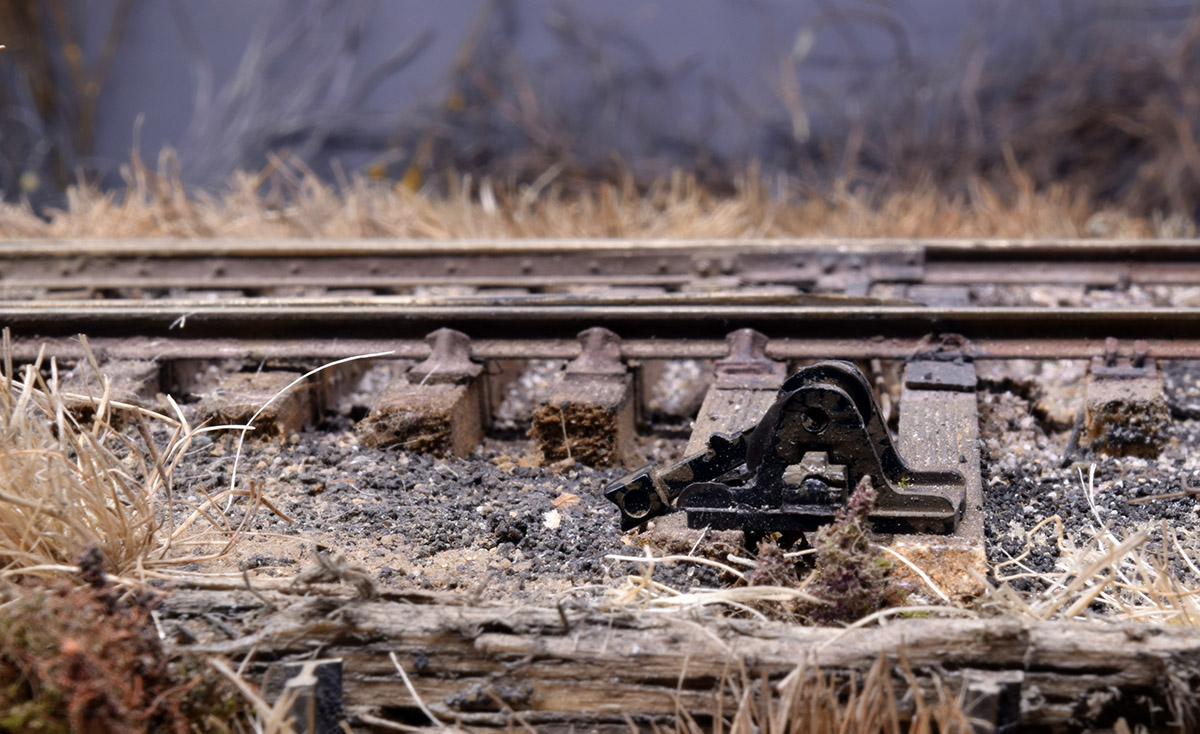
A sense of place is a familiar theme on this blog and as the saying goes: ”When the student is ready, the teacher appears.” David Kahler’s recent book The Railroad and The Art of Place, published by the Center for Railroad Photography & Art, arrived last week and it gave me a light bulb moment of understanding about this idea of place. The black and white images were shot over the course of six years during weeklong journeys to southern West Virginia coal country. It’s a rich volume that showcases the relationship between the railroad and the land it serves.
An architect by profession with an artist’s eye for line and composition through the camera lens, Mr. Kahler’s text and imagery spoke to me instantly, though at first, I was disappointed with the lack of captions for each photo. However, the genius of not imposing explanatory text on the reader allows the images to speak clearly. These photos deserve a degree of thoughtful reflection, as there is a story here the viewer may become a part of by his or her participation.
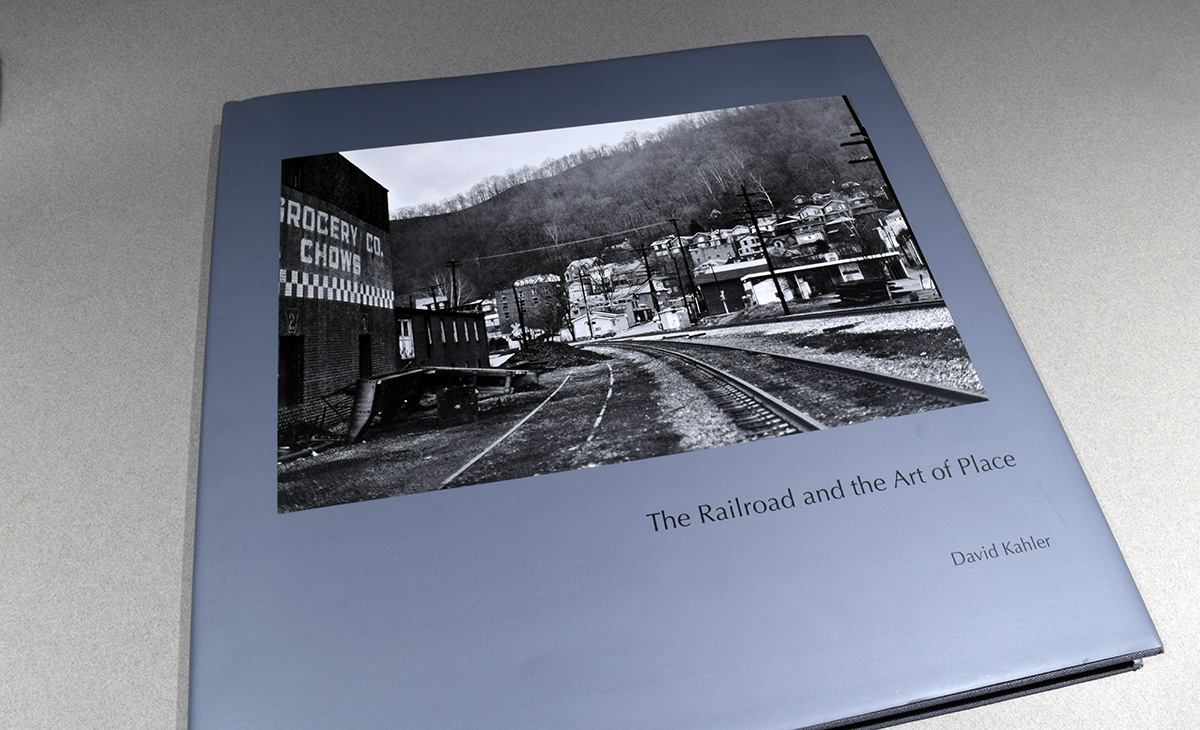
There are many lessons to learn from this book but one that stands out to my eye is how the railroad takes the lion’s share of space in many areas, while buildings, roads, utility lines and the like, all compete for what’s left. Here, as in many places within the Mountain State, houses and commercial buildings cling to steep hillsides like cockleburs stick to clothing. In this state flat ground is often a manmade premium.
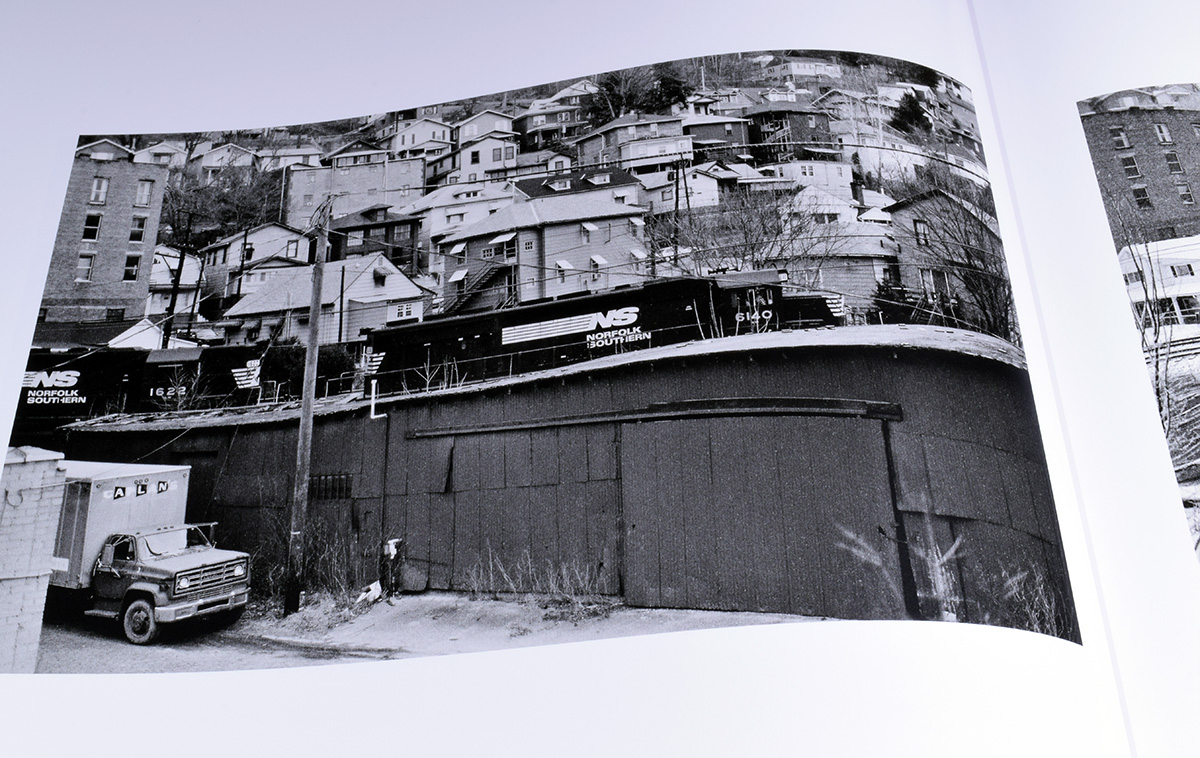
At Williamson, West Virginia buildings cling to hillsides. Nestled in cheek by jowl and stacked like cordwood, the number of houses in this scene is telling. Modeling examples with this degree of density are rare.
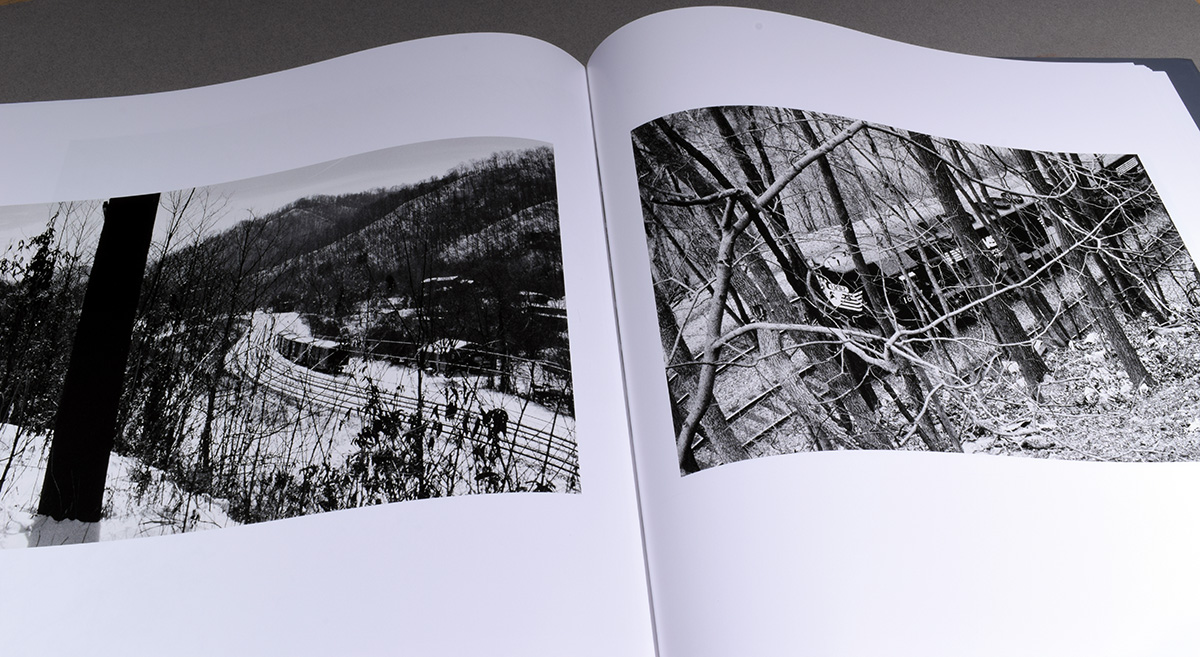
The dense summer leaf canopy may be simpler to model but with the leaves down, the raw beauty of the land becomes clearer.
There’s a rich variety of textures along the tracks and the landscape. The photos were shot during the dead of winter and with the leaves down, the raw beauty of the land comes through. From the rocks and tree trunks to the ever-present leftover debris of consumption, texture surrounds the railroad in these images. Call it junk or detail, it’s an aspect of scenery often mishandled or ignored completely.
Many of the photos do not feature a train as the main subject. Instead these allow the railroad to be seen as part of the landscape rather than the dominate aspect. It’s a context I understand, and reflects my own appreciation of the railroad as I find it. In many of the photos we see evidence of decline and the loss of what was. This too is the truth of many places that surround the railroad in 2020.
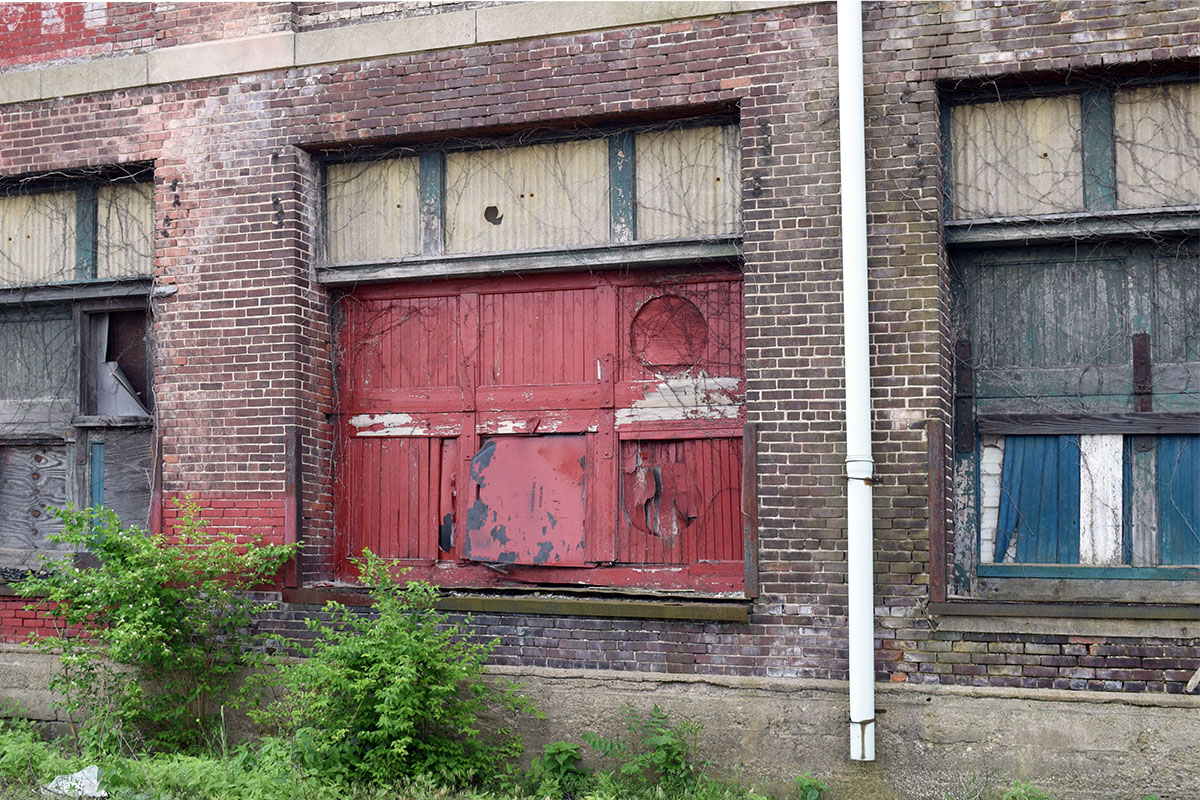
From my own observations in Richmond, images of decline and loss often characterize places near the railroad, yet few model this reality as it is. We prefer the play value of a busy, active warehouse. As you see below, I’m as guilty of this temptation as anyone.
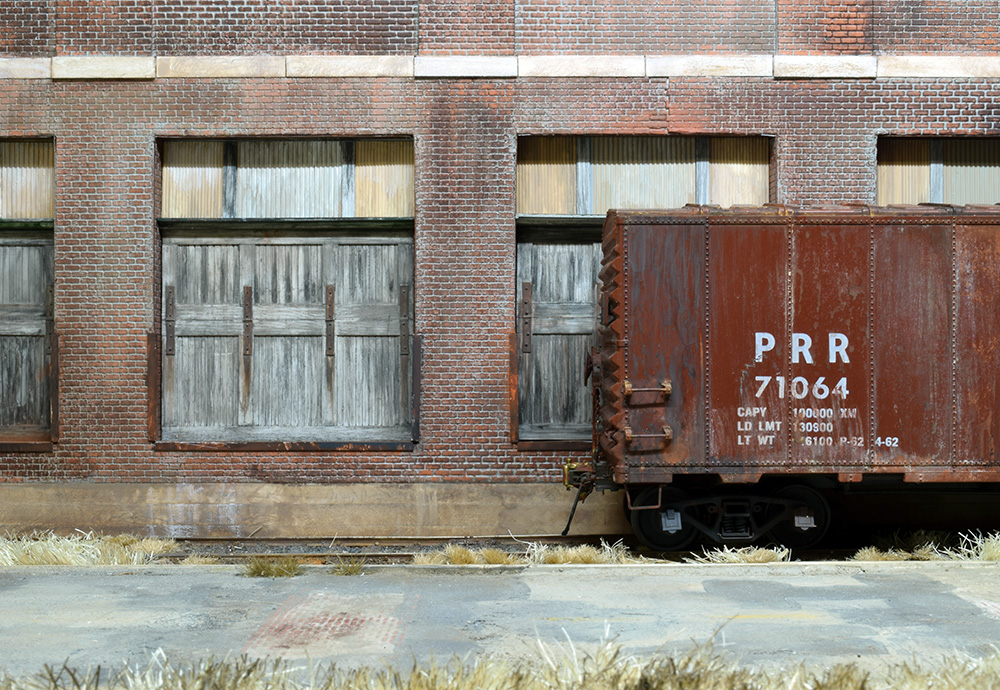
In modeling we’re content to skim the surface of things. By digging deeper into the philosophical questions about what makes a place distinctive, I see an opportunity to elevate my modeling. Williamson, West Virginia or Richmond, Indiana are both unique places in their own right and failure to recognize this uniqueness shortchanges our impression and understanding. This is more than a book of pretty pictures. By placing the railroad in the context of a place and time, it helps me see how much I’m missing when it comes to modeling the symbiotic relationship between the two.
Regards,
Mike
If you have further interest in the book, this post from The Trackside Photographer website should be helpful. There is an order link to The Center for Railroad Photography & Art at the end of it. For disclosure’s sake, I have had one article published on The Trackside Photographer but have no other affiliation with either site. -Mike
The photo in the book, looking through the trees, reminded me of one of the views you published in “Pieces of the Puzzle”.
An example of life imitating art, or possibly an artist at work.
The book sounds beautiful. Worth owning. Thank you for the suggestion. My library is again going through a period unforgiving redefinition and in doing so, I’m working toward books I want to read or immerse myself in regardless of an opportunity beyond their covers. Like somehow train books get an exception if they’re connected to a layout I’ve promised myself I’ll build someday. An exception I wouldn’t afford a “regular” book – the book should be a joy on its own. I like the idea of the photos without instruction on how to interpret or relate to them. That’s another lesson we can take into model railroading regardless of whether or not the layout is for our private pleasure or on public display. Can we connect without being on educated on which is the correct and singularly appropriate way to? Can we imagine classical sculpture in Rome and being told how to correct and how the way we thought we could was wrong?
I enjoyed your comment about the way the railroad fits into its space. Because the model railroader controls the complete environment of their layout and their reason is “because trains” it can be hard to compose a scene that tells the same story illustrated so beautiful in images like the ones you’ve shared. Studying topographic maps of an area it’s so enjoyable to discover how wise the railroad’s chosen route really was the most efficient way through even the most subtle of scenes – those surveyors could envision the easiest path. Because the railroad demands certain priorities it does create a hierarchy in the scene and around its dominance things like the places for individual people seem secondary and sometimes even more like an afterthought. I have little experience in designing large layouts but think one really exciting opportunity in that kind of space would be creating a model that could attempt to represent these stories and the interrelationships between each. Like somehow connecting the model trains and their model tracks more intimately and directly than just the coincidence of our current approach (“we had to cross the mountain this way” as opposed to “the mountain looks fierce but also tailored into the corner left behind after I laid all my track”*). How could we arrange the houses for the families in that coal country town so we look at the scene the way they did?
A detail I noticed in your photo of the warehouse was how nature stubbornly finds its way back into every scene no matter how much humanity has tried to deny it. In model railroading we might arrange a little static grass or a foliage clump near the base of a warehouse but in that photo of the warehouse in Richmond shows a tree taking back even that sliver of earth. Left unattended it will grow and through determination and time, incrementally change the shape of that massive brick warehouse’s walls. In just one frame, that’s the story: “We share this. I noticed that.”
Good morning
Chris
*We always build model railroad scenery like this. The advice carved into stone is always: get all the tracks in and wired and make sure everything is right before we go messing it up with scenery.
An example of life imitating art, or possibly an artist at work.
Perhaps. Actually, the scene you’re referring to was dumb luck rather than deliberate planning. I had that empty space I wanted to fill, so I placed the trees and discovered the composition by accident much later. It was a case of not thinking without falling asleep.
Regards,
Mike
I love these thoughtful comments of yours. Thank you Chris. What I don’t love is my inability to craft a worthy response to them.
Mike
Great blog entry, Mike! Reading this brought about my own lightbulb moment! It is exactly what I needed to jumpstart a project that I have been envisioning for years but couldn’t quite see. Thank you
Hi Chris R.
Glad it helped.
Regards,
Mike